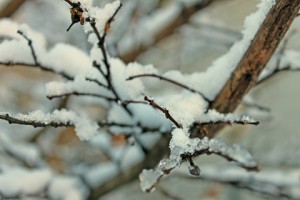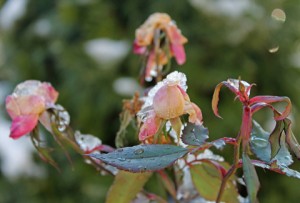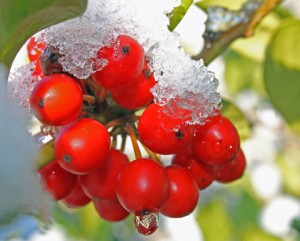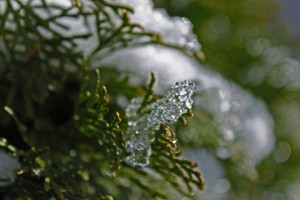That beautiful, romantic snow that blanketed the Northern Virginia, Maryland and Greater Metro D.C. area is gone! Luckily, I was able to capture some of the lovely peacefulness before it totally melted away …

My poor rose bushes don't know what to do -- bloom or hibernate - so we get scenes like this one ...
Today — on February 1 – we have temperatures in the 60′s …Regardless of what you think about Global Warming or Climate Change, there’s no denying it has definitely been warmer this Winter.
It appears Spring is springing, and Winter has wafted away. (We should still remain vigilant. We could get pummeled in February or March by a rogue storm.) But, all in all, its been a freakishly warm winter in the U.S. So how does the apparent change affect us and what is anybody proposing we do to prepare for it?
Well, in the United States, we are beginning to get more serious about it. On Jan. 19, the Obama administration released a draft of a plan to coordinate responses to global warming across the country.
It’s called the National Fish, Wildlife and Plants Climate Adaptation Strategy, and while the United States has no national strategy for curtailing its contributions to climate change, it does now have a partial strategy for responding to its effects.
The National Fish, Wildlife and Plants Climate Adaptation Strategy is a call to action — a framework for steps that can be taken over the next five to 10 years based on climate change projections for the next century.
 It is designed to be a key part of the nation’s larger response to a changing climate, and to guide responsible actions by natural resource managers is a comprehensive, multi-partner response to the threat of climate change in the United States.
It is designed to be a key part of the nation’s larger response to a changing climate, and to guide responsible actions by natural resource managers is a comprehensive, multi-partner response to the threat of climate change in the United States.
The Strategy is being developed with input from a wide variety of federal, state, and tribal representatives, along with active engagement and input from non-government organizations, industry groups, and private landowners. To learn more, visit: http://www.wildlifeadaptationstrategy.gov/index.php







